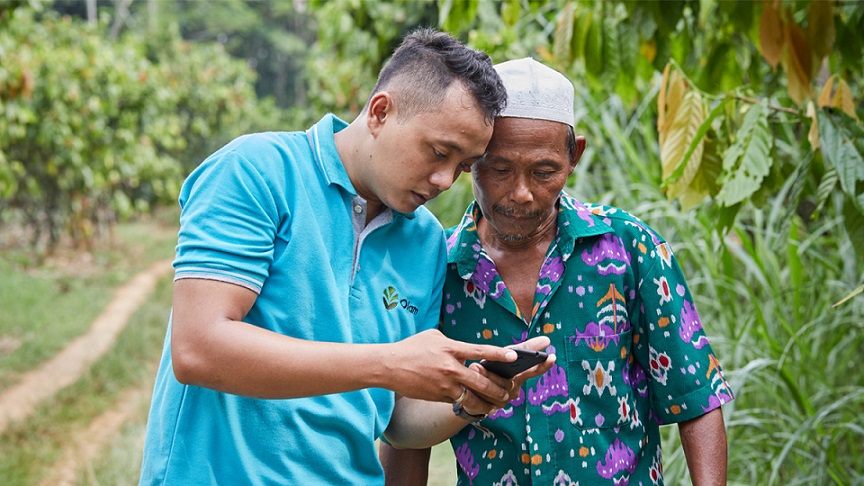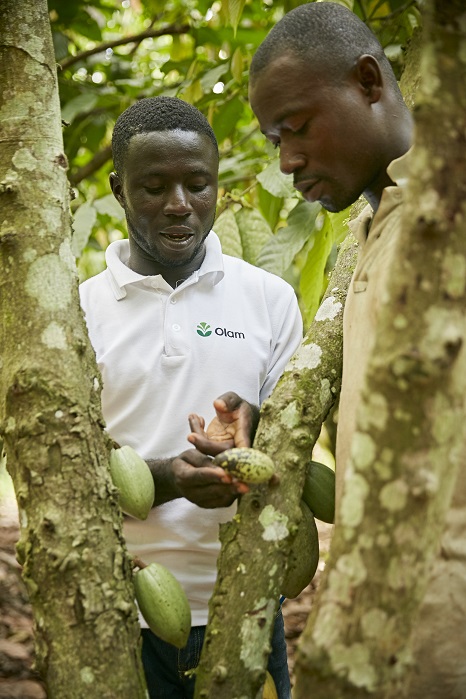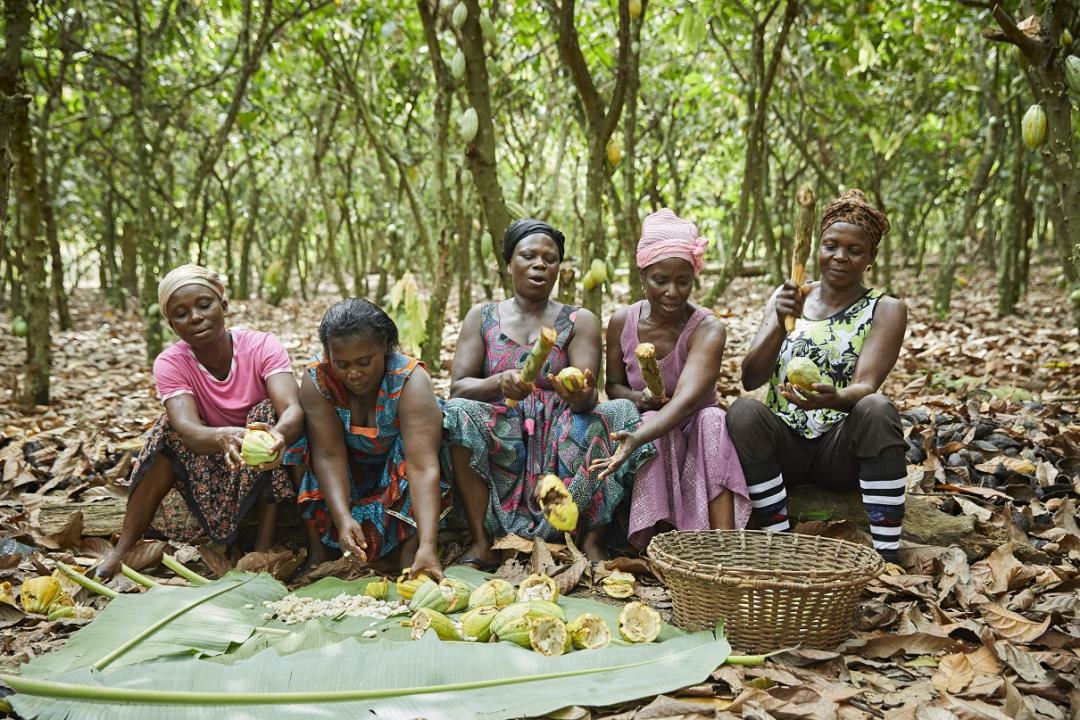Collaboration on living incomes is key to unlocking a sustainable future for cocoa
Awareness of the environmental and social impact of our food is growing. Scrutiny of global supply chains is higher than ever as consumers, businesses and governments rightly ask questions about how we create a food system that is fairer and more sustainable, delivering value for those who work to produce our food as well as those who consume it.
The cocoa industry faces many deep-rooted challenges. Most of the world’s cocoa is grown by farmers with less than two hectares. Already low yields are threatened by aging crops and the effects of climate change, meaning many farmers struggle to support their families. That in turn can fuel problems like child labour, as children are kept at home to help their parents on the farm rather than attend school, and deforestation as farmers clear more land for crops.
It is critical we help cocoa farmers to address these problems – and in recent years, there has been progress. Industry coalitions such as the Cocoa & Forests Initiative (CFI) have begun to turn the tide on deforestation in Ghana and Côte d’Ivoire, the world’s largest cocoa producers. At Olam Food Ingredients (OFI), in partnership with our customers, we have enabled child labour monitoring in all our managed cocoa sustainability programmes. We have also established 100 per cent deforestation monitoring across our direct global cocoa supply chain, underpinned by traceability back to the individual farm or community. This is part of Cocoa Compass, our sustainability ambition for the future of cocoa.

Enabling cocoa farmers to make a living income
But there is much more to do, especially when it comes to tackling the root cause of these issues: the inability of farmers to make a living income. We will not create a truly sustainable future for cocoa until we can make sure farmers can earn a decent income from their crop. Only then will we achieve OFI’s longer-term ambition of a professionalised and quality-focused cocoa supply chain, one where child labour is eliminated and the natural world is protected.
Enabling cocoa farmers to secure a living income, covering all the household requirements including food, education, health, transport and unexpected costs is a significant challenge, not least because cocoa is sourced from thousands of smallholder farmers. Understanding what constitutes a living income in each cocoa sourcing country relies on detailed and robust data and the fragmented nature of the cocoa supply chain means that sometimes several living income estimates are needed in the same country to account for regional differences in socio-economic conditions.
Building coalitions for living income benchmarks
If we are to systematically improve farmer incomes, we need reliable and up-to-date benchmarks across all the countries we source from. That’s something no company can achieve alone, which is why OFI recently worked with Sustainable Food Lab to bring together a coalition of our peers, the Global Living Wage Coalition (GLWC), the Anker Research Network and the Living Income Community of Practice to publish the first-ever living income reference values for Cameroon, Nigeria, and Papua New Guinea, as well as an updated Côte d’Ivoire level.
We are on track to complete similarly accurate and third-party benchmarked living income estimates for several cocoa-producing regions in Brazil by mid-2021, and adjusted Côte d’Ivoire and Ghana levels in 2022. The same industry coalition is actively working to fund living income estimates for several cocoa-producing regions in Indonesia. By the end of 2021, we expect to have published living income estimates for all our cocoa regions.

Identifying living income gaps
With these benchmarks in place, we can begin to build a better picture of the existing living income gaps in our direct cocoa supply chain and work towards our target of 150,000 farmers earning a living income by 2030. We are now working to establish actual farmer incomes across our cocoa sourcing network, developing a comprehensive data collection model that will combine detailed surveys with polygon mapping, a more precise form of mapping which allows us to understand each farm’s size and perimeter. This will allow us to gather information on individual farmers, such as reliable estimates of their yields, production costs, the breakdown of their net income from cocoa and other sources, and the size of their land.
With this information, we will be able to better understand precisely where the barriers and opportunities for a living income lie and, importantly, tailor our interventions to have the most significant positive impact. This may mean working in partnership with customers and governments to distribute and plant forest and fruit trees that will improve farm microclimates and soil fertility, increase cocoa harvests and restore biodiversity. In other areas, the focus might be on training farmers in techniques like agronomy and agroforestry to help them improve yields through their existing land, or setting up Village Savings and Loan Associations to help farming families to access critical finance.
This is just the beginning of what will be a decade-long journey towards living incomes for cocoa farmers. But thanks to the work of the Sustainable Food Lab and its coalition partners, we now have a consistent and reliable yardstick by which we can measure our progress. One that not only helps us to understand the scale of the challenge we face, but also ensures our work to help improve livelihoods is having a real impact on farmers and their families. It is collaborations like these which will accelerate progress towards a sustainable future for cocoa.
